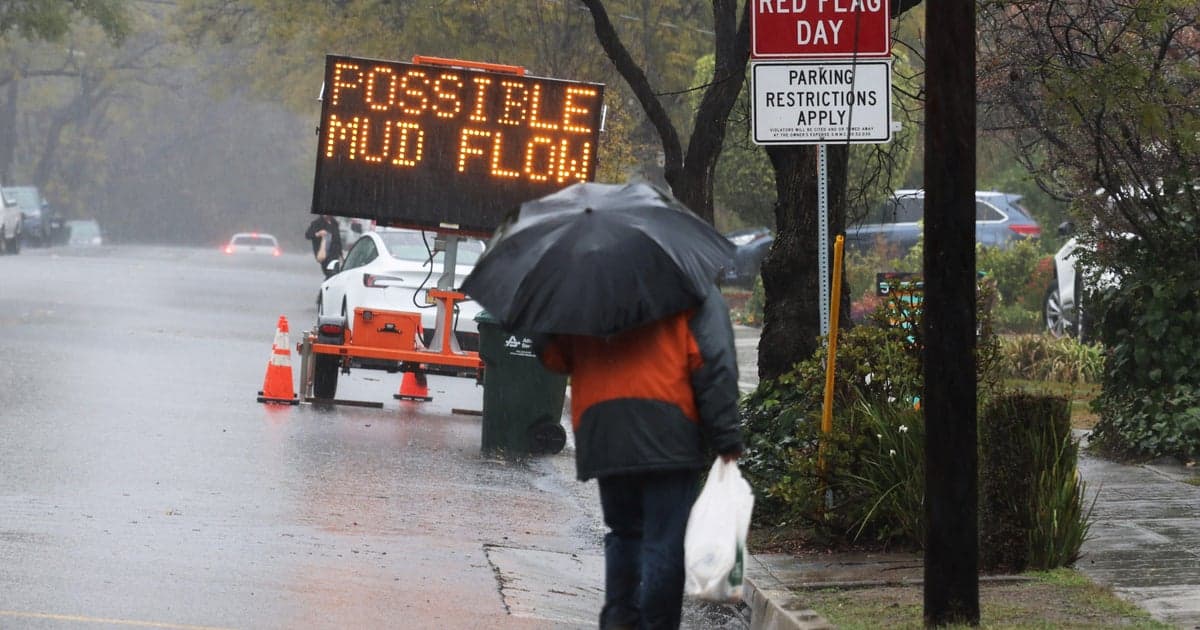Record Rain Pounds Southern California, Millions Under Flood Watches
A historic Pacific storm has unleashed record rainfall across Southern California, placing millions under flood watches and forcing hundreds to evacuate. The deluge threatens already strained communities and health systems, exposing gaps in emergency planning and the need for equitable disaster response.
Listen to Article
Click play to generate audio

A powerful Pacific storm battered Southern California on November 16, 2025, dumping record amounts of rain and prompting flood watches for millions of residents as hundreds were forced to leave their homes. The system, described by NBC News correspondent Morgan Chesky, produced rapid runoff and overwhelmed streets and river channels in both coastal and inland counties, prompting emergency declarations and large scale sheltering efforts.
Local officials reported widespread travel disruptions and damage to public infrastructure as the storm repeatedly dumped heavy precipitation on saturated ground. Evacuation orders and advisories were issued in low lying areas and communities along swollen waterways. Emergency managers warned that recovery could be prolonged, particularly in neighborhoods where aging storm drains and levees have not been upgraded in decades.
Public health officials are closely monitoring the aftermath as concerns mount over injuries, water contamination, and interruptions to medical care. Emergency departments are preparing for a surge in weather related trauma and illnesses related to exposure and contaminated water. Chronic care patients and those reliant on regular medical services face particular risk from disruptions in transportation and health facility operations. Public health planners emphasize the importance of continuity plans for dialysis, oxygen supplies, pharmaceuticals and mental health support during prolonged displacement.
Community impact has been deeply unequal. Low income neighborhoods and communities of color often lie in flood prone areas or near undersized infrastructure, increasing their exposure to storm hazards. Underserved residents can face barriers to evacuation when transportation is scarce or when job constraints and immigration concerns make seeking shelter difficult. Advocates say the storm highlights long standing inequities in emergency preparedness and recovery funding, calling for investments that prioritize climate resilience in the most vulnerable communities.
The unfolding emergency arrived as national attention was divided by several political controversies. President Trump said he was "sort of" made up his mind about potential military action in Venezuela and was publicly feuding with Representative Marjorie Taylor Greene over access to documents related to Jeffrey Epstein. The president also ordered a Justice Department inquiry into Epstein links to political figures, and prosecutors were pursuing new revelations in the fatal shooting of college football coach John Beam. The concurrence of intense weather and political tumult has left local officials seeking both federal aid and broader policy attention to climate driven disasters.
Experts say storms of this intensity are consistent with climate trends that favor more extreme precipitation events, stressing the need for coordinated federal and state investment in water management, floodplain restoration, and equitable emergency services. For many residents, the immediate priorities remain shelter, safe drinking water, and the restoration of essential services as cleanup begins.
As rivers recede and cleanup crews move into damaged neighborhoods, community organizations and public agencies are preparing for a long recovery process. Advocates stress that rebuilding must address the systemic vulnerabilities that amplify harm in future storms, ensuring that the hardest hit residents receive prioritized support in the weeks and months ahead.

